8 Years of Warframe. Let me tell you its Lore
By rapid 4 Comments
Preamble
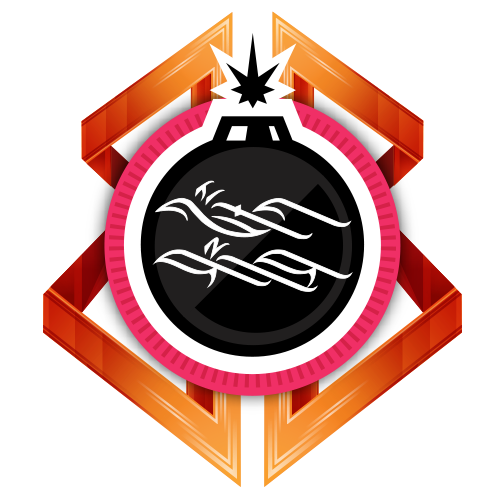
I have been the Clan leader (Warlord) of the Giant Bomb PC Warframe Clan (Giant Bomb Heavy INC) and a manager of the discord since 2014. Our moderator @zombiepie in his last blog series encouraged and inspired me to write about my unique player experience and knowledge of Warframe and its lore.
If you are reading this I am going to assume you are of any of the following:
- Curious about Warframe, but you aren’t going to try it or get back into it.
- Played or tried to play Warframe but not enough to remember anything going on about its story.
- Play Warframe, got through the cinematic quests, but curious what my take on the story is (thank you!)

Now, I would not call myself a “Lore Expert”. There are dedicated content creators on YouTube and Twitch like StallordD and Byf that have done more comprehensive lore videos, analyzing every piece of dialogue, cutscene, codex entry, warframe description and the likes in the game. Nor, do I have any insider knowledge about Digital Extremes. There are “Warframe Partners” which I am not part of, who have better access to DE to ask questions / interview them directly. I am just a Giant Bomb fan who has played this game way too much with other duders. I do chronicle the GB Community’s Warframe adventures on YouTube, and have made small videos of the cutscenes and my personal playthroughs of quests in Warframe as a hobby.The most flattering thing I have been called by someone in the discord is: A Warframe Historian

Dark Sector But Not That Dark Sector

When Warframe came out in 2013, it was hard to imagine that it would grow and to grow and sustain a sizable audience. Warframe and its developer sort of stumbled into becoming “games as service” by accident or by circumstance. It organically transitioned into a game of service product. At the time, the term “games as a service” was not something talked about yet. "Software as a Service" was just starting to be thrown around in the business and enterprise software world but it had not come to games yet. One of the craziest things I think about now is that I started playing Warframe after a year PHANTASY STAR ONLINE 2 initially released in Japan. Shoutouts to the PSO2 GB Clan at the time: TrackManiacs. Destiny 1 would not have come out for another 2 years.
If you are curious about learning more about Digital Extremes and Warframe’s origins, Danny O'dwyer’s NoClip documentary on Digital Extremes (DE) does a great job covering the studio and the game's launch.
To quickly summarize for anyone unfamiliar with the studio’s history: DE had the vision for a game called Dark Sector, which could not get any publisher funding, so the Dark Sector which was released in 2008 was a compromise, and for the sake of this lore explainer, Dark Sector is not canonical.
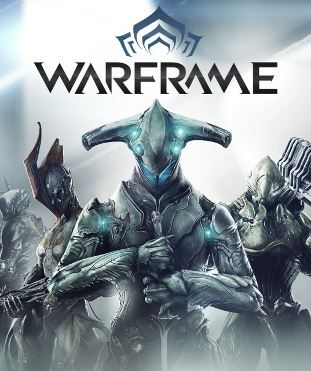
Warframe was a last ditch effort by the studio to try to make their vision of what they originally wanted Dark Sector to be. They choose the Free To Play (F2P) model hoping that enough players would check out the game and support it with their founders program, and microtransactions for them to continue making the game and keep their studio afloat. In the software world it is often referred to as "a minimum viable product." They knew that the shipping product would not be a $60-value product.
In 2012, they pitched an early build of the game to big F2P publishers and once again were turned down. Warframe’s creative director, Steve Sinclair, recounts one instance where they took the game to one of the big F2P publishers in China and was turned down saying "Your game is the best looking free to play game (in 2012) I’ve ever seen, [but] you will fail". Citing, "that the game cannot look as good and update as often to build your community".
This became sort of an ethos for the developers; fast and often updates to the game. Additionally, DE’s community management team keeps an open dialogue with their community to maintain player engagement, something that has not been trival.. If you then watch @mmahardy's documentary he touches on how challenging it is for the developers to keep the warframe community engaged.
It is because of these frequent content updates the drive to keep their player base engaged that not only have the gameplay systems expanded throughout the years, but also the game’s story-telling and lore as well. On the other hand, it is because the game is constantly changing / evolving that has created problems with its new player experience and on-boarding.
Finally, part of what makes Warframe so notoriously impenetrable is its lexicon. The game likes to invent its own vocabulary for things. I will use terms from other video games to explain things.
Here are three series that will let you already totally understand Warframe’s lore: Warhammer 40k, Mass Effect and Evangelion. Unfortunately, Giantbomb's resident Anime experts Austin Walker and Dan Ryckert are no longer with the site. Alternatives in case you are not familiar with the aforementioned franchises are Persona, or Jojo’s Bizarre Adventure.
The Universe
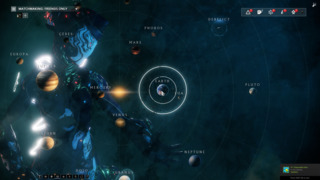
Initially, we are introduced to the game’s main three antagonistic factions: Grineer, Corpus and the Infested. The factions all have the typical ambitions to assert dominance and control over a distant future version of our solar system, now named the Origin System.
Players are the Tenno, guided by a mysterious individual called the Lotus and using their exosuits called “Warframes” to aim glide, bullet jump and parkour their way through procedurally generated levels and corridors gunning and cutting down hundreds of grunts and mobs from these factions in a pretence of bringing balance and justice. To be fair, these enemies aren’t the most moral upstanding citizens of the solar system either.
The Grineer are a facist regime, made up of genetically modified test-tube grown clones of humanity, with an inbred hatred and xenophobia towards anyone not like them.
The Corpus are a corporate cult driven by greed, and led by a board of directors who preach commercial profit as a religion. They are known for their use of stolen technology and armies of robotic proxies called MOAs.
The Infested or "Infestation" are victims of the Technocyte virus, a parasitic pathogen created by the Orokin. Those overtaken by the virus are physically transformed into grotesque flesh creatures. These carriers go on to infect others they come into contact with - spreading like plague. Oddly enough Warframes and Tenno seem to be immune to the virus.
But, for a game called “War”-frame, it might be surprising to know how little actual war is going on. The last large scale conflict that spanned the whole solar system, occurred centuries ago.
The Orokin
Centuries ago, overpopulation and dwindling resources forced humanity to leave an uninhabitable Earth. The Orokin were one of the first factions to venture out into our solar system and learn of The Void- a mysterious pocket of extradimensional space which defies the laws of physics. Through studying the Void, it rapidly advances Orokin technology. The Orokin then began asserting dominance over all other colonists in the origin system until they became the aristocratic ruling class of what is now known as the Orokin Empire.
Ruled by seven Emperors, they establish a rigid class system. They quickly develop a god complex, proclaiming themselves divine beings who believe they have achieved mastery of the Void and gained immortality and surpassed humanity. Furthermore, working knowledge of the Void and Orokin advancements were granted only to those of the Orokin Elite, and withheld from the rest of society. The Emperors’ will is carried out by the Congress of Executors. In the game, we meet Ballas, one of the Executors responsible for the creation of Warframes.
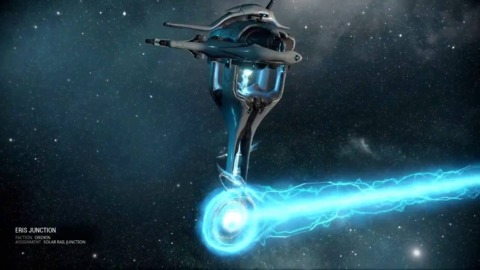
The Orokin expands out across the solar system. Establishing Solar Rails, a faster-than-light travel system. Think of Solar Rails, as the Mass Relays in Mass Effect. In the game, the player must re-activate each of the Solar Rails that have fallen dormant after the eventual collapse of the empire. Unlocking the Solar Rails and powering them up again is how the player is able to progress and unlock travel to new planets. The Orokin terraformed several planets and moons in the solar system. A terra-formed Earth’s ecology is now feral, overgrown with jungle and barely suitable for human inhabitants.
Due to the massive territory expansion, soon the Orokin found their resources depleted, the large labor force spread too thin. Experiments began to start genetically modifying and cloning the Orokin’s working class and laborers, leading to beginnings of the Grineer. However, when they realized that the Origin System itself could not sustain their growing Empire, it was proposed that the empire could terra-from another nearby star system called Tau.
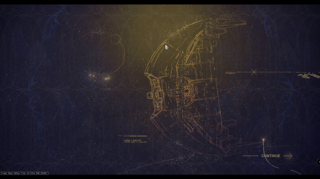
The Orokin conducted an experiment to send a colony ship on an expedition through the Void to colonize Tau. The ship was Zariman class military ship with the designation: Ten-Zero (Ten-0 *wink*). The Void jump from Saturn to the Outer edges of the origin system fails, and contact with the ship is lost in the Void. Orokin history refers to this as the "Void-Jump Accident". Years later, the Zariman mysteriously reappears, when the Orokin sends a recovery crew in which they discover that all the adults were brutally slaughtered,.The only survivors are children, mentally and physically scarred by the long exposure to the void. Soon it was discovered that the long exposure to the Void had additional side effects on the children, namely the development of volatile abilities and sensitivity to the void. (more on this later). Initially fascinated by the Zariman children, Orokin Executor Ballas, an eventual creator of Warframes, tasks his lover, an Orokin Archimedian (scientist) by the name of Margulis, to study the children.
The failed expedition proved Tau to be initially too dangerous and inhospitable to keep sending colony ships to. The system would need to be first pre-terra-formed. The Orokin then decided on “The Plan,” invent and send artificial life forms which could rapidly adapt to the hostile surroundings to spearhead the colonization of Tau without the need to send humans. Originally, these synthetic machines started as nothing more than simple worker drones, automatons sent to scour Tau, they then rapidly adapted and evolved. Not only able to replicate themselves, but build more complex versions and upgrade themselves. These machine life forms evolved themselves to the point they inadvertently gained sentience, and are known now as the Sentients.
Similar to what conspired between the Quarian and the Geth in the Mass Effect series, the Sentients came to the revelation that their creators would likely eliminate them once they had served their purpose, and the Orokin’s eventual colonization would only bring ruin to Tau. Furthermore, due to something engineered by the Orokin called the “Flaw,” when Sentients began returning to the Origin system traveling through the Void left them sterile, unable to reproduce even though they had evolved the ability to do so before exposure to the Void. Originally, the Orokin had intended “The Flaw” to kill any Sentient crossing the Void attempting to return to the Origin System, however, it did not work. The Sentients then went to war with their creators, seeking revenge thus beginning the“Old War”.
The Orokin are quickly overwhelmed, and soon realize they are fighting a losing war. The Orokin high technology proves ineffective in stopping the Sentients. The prestigious Orokin warships and weaponry were assimilated by the Sentient and turned against them. The Sentient armada and fleet only grew in number, fed by the wreckage of the Orokin warship and machines. The Dax, the Orokin elite guard, and finest troops adorned in gold armor are no match to the sheer overwhelming number of Sentients. The Orokin repurpose their cloning technology into engineering battle bred soldiers. Even combined with numbers of Grineer clone soldiers, the Sentient were still seemingly unstoppable.
What transpires from this point of the Old War is finally better told in the game’s ‘cinematic quests” the Second Dream, the War Within and the Sacrifice.This part of my lore explanation will now go into heavy spoiler territory, explaining the major revelations in these three major narrative quests. This is your final spoiler warning!
Brief Aside: Challenges With The Game’s Narrative
The reason why veteran players say Warframe's story doesn't begin until 20-70 hours into the game is because up until The Second Dream there is no player agency, nor personal stakes, or a distinct narrative for the player to follow the game. The game struggles to tell the backstory that I just explained. I frequently encounter new players drop off before reaching this point in the game despite best efforts. One such as our moderator @mento, who wrote an excellent blog series “Seeking Warframe & Fortune" giving Warframe his best shot despite inevitably hitting a wall.
Even today, at the time of this writing to wrap your head around Warframe and progress in it to this point as a new player is a non-trivial task. As a fan, I would say you only played Warframe if you at least got past the Second Dream.
For a player like myself, who has been following Warframe since its release, it was not until Update 18, more than 2 years after the game’s closed beta, did Digital Extremes make their first big leap with Warframe’s main story with the release of the Second Dream. My explanation will not break down details of each quest individually, instead it will explain everything as a whole - taking plot points from all the quests.
Diving Into The Spoiler Territory
Traditional Orokin weaponry was proving ineffective against the Sentients forces and the Orokin were forced to manufacture alternative forms of weaponry.At this point where things start to turn a bit Evangelion.
Ballas narrates in his Vitruvian (Old War Recordings) found during the Sacrifice Quest:
“Our hubris shone like a black star... for our technology, our war machines, were your kin. How easily you turned them against us. We were forced to older means. Not circuits, nor light... but flesh and disease. Our horrors past, our ravaged outer colonies... became gardens!"
The Orokin turned to engineering weapons made of flesh and disease, matter that the Sentient machines could not assimilate.What they developed was Technocyte-a living organism that was able to assimilate other biological life, bonding with and strengthening its host.
If you recall the Infested faction, they are made of the victims of the Technocyte virus, a strain of Technocyte that grew out of control and spread throughout the solar system attempting to assimilate all biological matter it contacts. But the Orokin were successful with a different strain of Technocyte, a Helminth. Ballas took the Orokin’s best warriors, the Dax, some who volunteered, some unwillingly and infected them with the Helminth Technocyte reagents. Through this process a human is transformed into a Warframe.
“Their skin blossomed into sword-steel. Their organs, interlinked with untold resilience. Yet their minds were free of the Infested madness. Or so we thought. We set them upon the battlefield, bio-drones under our command” - Ballas
Further In the game players may eventually discover how to access The Helminth Infirmary on their ship. Located on the starboard side of the Tenno’s Oribter, the room covered over by what looks to be the infestation, however, this is actually where the Helminth resides, intentionally integrated into the ship and according to Ordis is integral to the Orbiter’s biological functions.
"Disgusting, is it not Operator? Ordis would enjoy PURGING THIS ...uh, cleaning this room but sadly this... vile mass serves you and your Warframes. A necessary evil."

Knowing how a warframe is made, Ordis explains the Helminth Infirmary is responsible for assisting in the crafting of the Tenno’s Warframes on the ship. The material needed to reproduce a copy of the Warframe from blueprints.
When the player crafts a Prime Warframe, it is a reproduction of one of the original forms of the Warframes. At some point the Orokin later invented the technology to mass produce replicas and variants of the prime Warframes.
The Helminth strain is also designed to subsume the host’s mind when they are turned into a Warframe, their free will is stripped away. While these Warframes proved effective against the Sentients, they still retained echoes of their former selves and enough that it made their behavior unpredictable and they became just as likely to turn on their Orokin masters as the Sentients.
In rare cases like Excalibur Umbra, Umbra is able to remember his final moments as a Human before being forced to become a Warframe. Haunted by those memories he is able to retain his sentience and act on his own accord.
"The Warframes... all of them... failures. Surprised? They turned on us, just as [The Sentients] did. And so we had no choice but to commit them... to grave... - Ballas
The Orokin realize they require a means to control the Warframes. They discover that they can use the Tenno’s power, and use a newly devised technology called Transference to force the Warframes to comply.
The Tenno
Now that the origin of Warframes is explained, you might be then asking: “What then is the Tenno?” Recall the events of the Void-Jump Accident, the Zariman Ten-Zero recovered with only the children still alive. Children who developed volatile abilities due to being exposed to void. The children were constantly in mental and physical pain. Margulis showed them love and compassion, treating them as if they were all her own son and daughters. Researching means to help ease their suffering, and control their powers.
One child named Rell however, is outcasted due to his autism, he develops a unique awareness and understanding of the void. He is able to sense a mysterious entity within the Void he refers to as the “Man in the Wall”. Rell claims that this entity is indifferent, an embodiment of the void’s consciousness and has always existed. As an outcast Rell is taken in by a group that eventually will be called the Red Veil. They heed Rell’s warnings of this entity and study the Void.
However, the Orokin Executors objected to Margulis’ work. They ordered her to cease her research as they see the children as abominations, calling the children “Void devils” which needed to be destroyed. Despite warnings from Ballas, Margulis continues her research and enlists the help of another Archimedian specialized in biology and apothics named Silvana. Margulis is able to suppress the children’s memories of the Void Jump Accident, and places limits on their sensitivity to the void which then allows the children to better control their abilities.Silvana and Margulis develop a process known as “Transference” in which the child’s mind could be transferred into a surrogate body strong enough to withstand their full power. The Orokin however discover Margulis’ transgressions whereupon she is ordered to appear before Orokin Executors and recant, but refuses and they sentence her to death.
However, desperate to use any means necessary to achieve victory against the Sentients, the Orokin soon order Silvana to resume research into Transference, realizing it could be used to project another mind into a Warframe and fully control them. The children are trained to become “Operators” of the Warframes and are given the title of the “Tenno” (Ten-O). The Tenno prove to be highly effective in combating Sentients turning the tides of war back in the Orokin's favor.
Ballas, filled with grief over Margulis’ death, and feeling resentment over the Orokin Emperor’s judgment starts to plot to betray the Orokin. Ballas then conspires with a Sentient known as Hunhow on a way to bring down the Empire. The many quotes I have included from Ballas, are from his communications with Hunhow disclosing the true nature of the Warframes and Tenno weapons the Orokin were using against the Sentients.
Collapse of the Orokin Empire
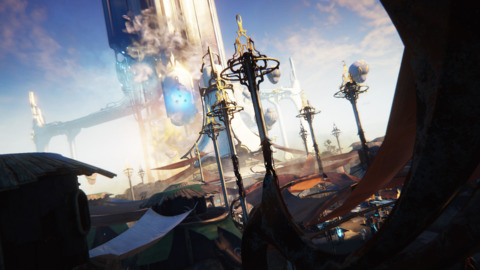
Ballas reveals to Hunhow the secret weakness of the Warframes, the Tenno Operators. The Tenno themselves are un-guarded, vesseled in pods, induced in a perpetual dream-like state. The pods are on Earth’s moon, Lua in a place called “The Reservoir”
Hunhow sends his daughter, Natah, to secretly infiltrate the Orokin hierarchy with Ballas’ aid. Natah becomes close with Tenno, changing herself to closely resemble what the Tenno saw Margulis was, their mother and caretaker. However, in doing so, Natah deluded herself into becoming the role she was pretending to be.
As part of Hunhow’s plan, the Sentients initiate a false retreat, falling back to the outer edges of the origin system. Hunhow fakes his own death, by allowing part of himself to be destroyed and fall into the seas of Uranus where he hides in a hibernated state, making it look like a tomb.
With Hunhow seemingly defeated, the Orokin believe the war to be over. The Tenno are hailed as saviors and the Emperors descend from their thrones for a “Tenno Absolution Ceremony”.
However, all this is part of Hunhow/Ballas’ ploy. When the Emperors arrive, the Tenno initiate a coup, slaughtering the Orokin Emperor and nobility at the ceremony. A soldier at the ceremony witnesses the Tenno’s slaughter and vows to enact revenge on the Tenno for their actions, a soldier who later becomes known as The Stalker.
After the coup, the final act of Hunhow’s plan was to have Natah reawaken Hunhow and recall the Sentients back to finish off the remaining Orokin. In the process Natah is supposed to also destroy the Tenno. But after learning of Margulis and her love and compassion for the Tenno, it drove Natah to abandon her final objective. She fully embraces her role, becoming the Lotus, a mother and guide to the Tenno.
Without the Orokin Emperors the social hierarchy of the empire collapses. Civil war erupts across the system thus leading to the emergence of the factions in the game’s present timeline. The Grineer take advantage of the conflict and chaos, and due to their large number of clone armies form a regime of their own, The Grineer Empire, led by the Twin Queens, become the established dominant civilization of the origin system. The Corpus conglomerate,industrialists profiting from the war end up with control of almost all commerce in the origin system. Without the strong presence of the Orokin, the Technocyte virus the Technocyte virus malignantly propagates into uncontrollable amounts of the Infestation
In order to protect the Tenno from the various conflicts, the Lotus hides Lua inside the Void. Both the Warframes and the Tenno are put into a deep sleep.. The Warframes are dormant, and hidden in crypods, deep inside ancient Orokin ruins. During the Second Dream Quest, the Tenno are tasked with shifting Lua back into nomal space, therefore adding it to the Star chart as a playable location.
The Warframe Era
In the present Warframe timeline, the player Tenno, answers Lotus’ call to action, waking up in the transference state, falsely remembering themselves to be the Warframe.
Guided by the Lotus, they journey throughout the origin system aiding and defending the colonies and inhabitants in need from the Grineer, Corpus and Infested. The Tenno become heroes to many of the inhabitants and cultures across the origin system.
All that is left of the Orokin besides the Tenno are the lost artifacts, derelict towers and Old War wreckage. Knowledge of how these ancient relics functioned is lost due to the absence of the Orokin Elite which the knowledge was withheld by.
Natah / The Second Dream
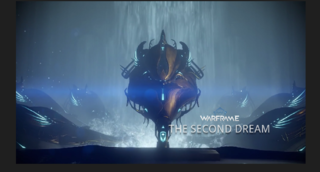
On Uranus, Tyl Regor, a Grineer scientist in search of Orokin artifacts, begins to excavate an Old War tomb under the sea. This inadvertently reawakens Hunhow. Enlisting the help of The Stalker, they track down the Tenno’s true self on Lua and attempt to permanently end the Tenno. Learning of Hunhow’s resurrection, The Lotus sends the player in pursuit of the Stalker, ending up on Lua. The Moon re-emerges out from the Void and back in the solar system. When the player reaches the Reservoir, they unknowingly open the pod where they themselves are sleeping. The activation of the pod causes the Transference Link between the player and their Warframe to become severed, their Warframe collapses stoically to the floor. The pod opens and the player, as the Tenno Operator emerges from the pod. Weak from their long stasis, the Tenno struggles to crawl towards their Warframe. The Warframe is unable to move on its own until the Tenno grasps its shoulder and temporarily re-connects themselves with their Warframe. The Stalker then appears in front of them. Upon seeing the player’s true form, he is hesitant to cut down the child. The Stalker allows them to escape. However, Hunhow does not relent, and sends several Sentients after them. The player and their Warframe retreat back to their Orbiter.
On the Orbiter, the player is directed to go to a never before entered part of their ship. At the back of the ship is a device called the Somatic Link in which the player must connect the Operator to in order to fully re-establish transference with their Warframe. They encounter the Stalker on-board the ship, and this time the Stalker no longer hesitates to kill the Operator; grabbing the child by the throat and choking them. Suddenly the player’s Warframe unexpectedly begins to move seemingly on its own to defend the operator. The Stalker is forced to retreat.
Afterwards, the Lotus appearing in person for the first time, arrives and carries the Operator to the Somatic Link. The player is allowed to choose their in-game appearance as the Operator.
The Lotus then begins to explain to the player who they really are, and the details about the Void Jump Accident, about Margulis and her work on Transference.
The War Within
Released in November of 2016, “The War Within” was a followup quest to the Second Dream. The Tenno, now aware of their power, encounter for the first time the Grineer Twin Queens.The Queens survived through many centuries by utilizing a ritualistic and more destructive form of Transference called “The Continuity”. It allows the Queens to transfer their entire consciousness from one body to the next. The Queens attempt to leave their rapidly aging bodies and invade the mind of the Tenno Operator. Using a mysterious resource called Kuva, they are able to borrow and poison the Tenno’s mind. If the Tenno succumbed to the effects of Kuva, their mind would become erased, leaving only the Queens’ consciousness to take control of the Tenno's body.
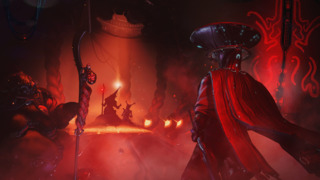
The dark vision quest that entails features the player, as the Operator, overcoming puzzles and platforming challenges. Teshin, a mentor figure to the Tenno, appears inside their mind and reveals himself to be a former Dax Soldier from the Orokin Era who knows of Margulis’ work. In order to save the Tenno from the Queens, Teshin undoes Margulis' suppression of the Tenno’s memories, and sensitivity to the void.
“Now you're trapped inside this place with the Queens burrowing in. Now I am forced to undo what Margulis did, to open the gates... and make you suffer. Margulis lied to you, a lie of omission. She did not cure the Zariman children - she erased them. My only hope is that truth still lingers inside you, buried within your mind. The power and the misery... of the Void”. - Teshin
Confronting their repressed trauma, the Tenno emerge gaining new Void abilities, and become strong enough to repel the Queens from their minds. The unlocking of their true powers also causes the Tenno to begin to see and hear the “Man In the Wall” that Rell, the outcast child referred to.
The Lotus Disappears
Sometime after the events of War Within, the Tenno discover a purple orb in their Personal Quarters on board the Orbiter. Upon interacting with the orb, the Tenno is transported to Lua, where they experience visions of Margulis’ trial and her final moments before execution. The Tenno eventually find themselves transported to the Enclave of the Lotus. But before the Tenno can speak with the Lotus, Ballas suddenly appears in front of them. Addressing the Lotus as Margulis, the two hold hands and walk through a mysterious portal of light. From this point, the Lotus has disappeared, leaving only her helmet which was dropped on the floor.
The Sacrifice
The Man in the Wall appears to Tenno more frequently, and they start hearing the Lotus’ voice calling to them inside their head. One day upon being beckoned by the voice of the Lotus, the Tenno touches Lotus’ helmet to suddenly experience a vision of Ballas and Excalibur Umbra.
This begins the previously covered quest, The Sacrifice, in which the player learns of how Warframes are created, and of Ballas and Hunhow’s plan to collapse the Orokin Empire.
Warframe Lore Recap Ballas' Vitruvian
The Tenno eventually track down and confront Ballas. With the help of the Tenno, Umbra is able to stab Ballas through the stomach. The Tenno demands from Ballas the whereabouts of the Lotus, just as she then appears from the sky - now reverted back to her true form of Natah. The Tenno questions her new appearance, provoking Natah to declare, "This is what I really am." She then takes a wounded Ballas back to the Sentient mothership.
The New War Soon(™)
After the events of the Sacrifice, the Man in the Wall manifests itself yet again, transporting the Tenno to witness Ballas’ fate in the Chimera Prologue.The quest’s cutscenes reveal that Ballas following his grave wounds, has been operated on, parts of his body replaced by Sentient growth. Sensing the Tenno’s presence in the room, he tells them that the Lotus has deceived them both, and must be destroyed. He imparts the idea of a “Sentient Slayer”, a weapon called Paracesis into the mind of the Tenno. Before Natah catches onto the Tenno’s presence, the Man In the Wall transports the Tenno back to the Orbiter.
Natah, fully Sentient once more, begins preparations to invade the Origin System with her Sentient brethren. She manipulates Alad V, a member of the Corpus Board of Directors, to start the Amalgam Project - tasked with research that inadvertently fuses Corpus / Grineer technology with Sentients
Warframe New War Official Teaser Trailer
Empyrean / The Erra Quest
To prepare for the imminent return of the Sentients, the Tenno reconstructs an Old War, Sigma Series Railjack warship. Traveling to a region of space called the Veil Proxima, they discover Sentient Outpost ships already converging on the Origin System. The Man in the Wall appears once again, showing the Tenno vision of the Natah and her brother, Erra on the Sentient Mothership preparing to deploy their Sentient fleets to begin the new Sentient invasion on the Origin System.
This is presently, where the main Warframe narrative is at. The next cinematic quest to advance the story will be “The New War” and it is scheduled to come sometime this year in 2020.
Warframe Cinematic Quest Recap
Thank you for reading this blog which as I was writing became a deeper and more deeper dive into the lore than I initially expected. Although there are plot details I intentionally left out to simplify the lore for those unfamiliar with the game. By all means, if you have comments or questions, please post them! I would love to discuss Warframe with you. A big thank you to @tbk and @dannyhibiki for their help in proof-reading this massive blog post and making sure everything I wrote was readable!
Finally, If you enjoy reading.this style of blog by me, back in 2016 I wrote and in-depth breakdown of the Black Box developed Need for Speed game connecting the lore from Need For Speed Underground to Ghost Games’ 2016 reboot, and how the franchise changed hands throughout 2000-2016. I mention this only because of the recent announcement that Criterion Games is back to making the next Need for Speed. If you are interested in a way in-depth dive into the lore of Need for Speed (at the level of a Fast and Furious) and how each of those Need for Speed games loosely ties with each other, check it out here:

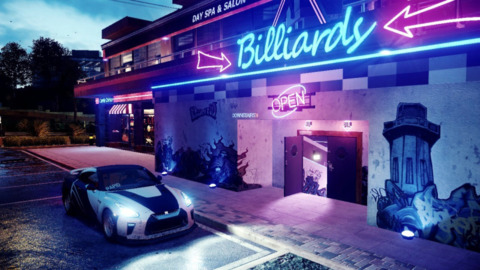
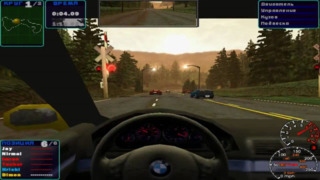
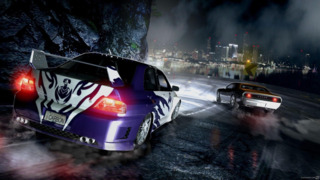
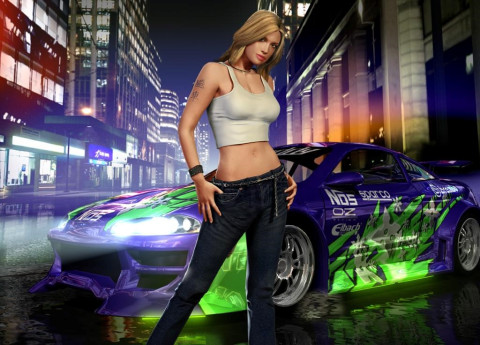
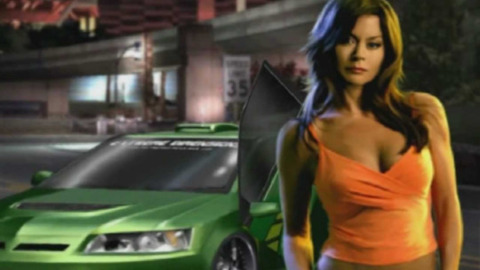
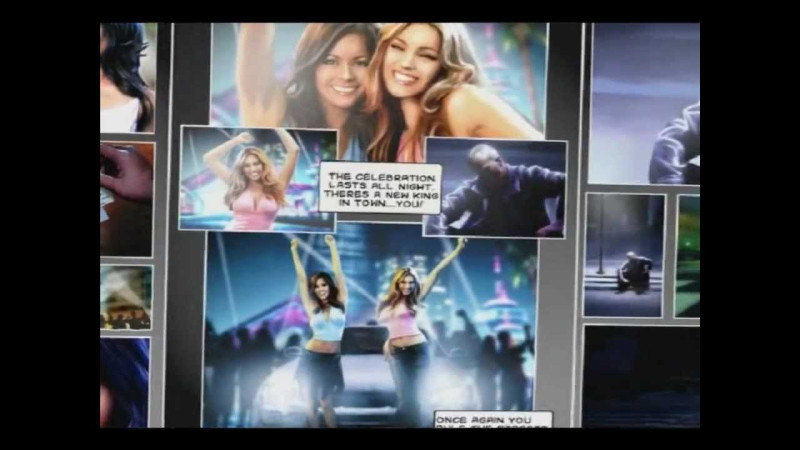
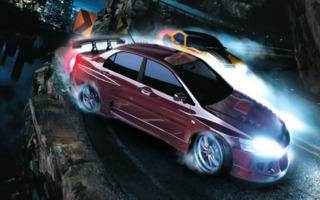
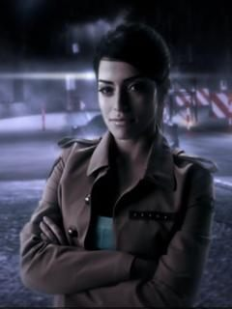

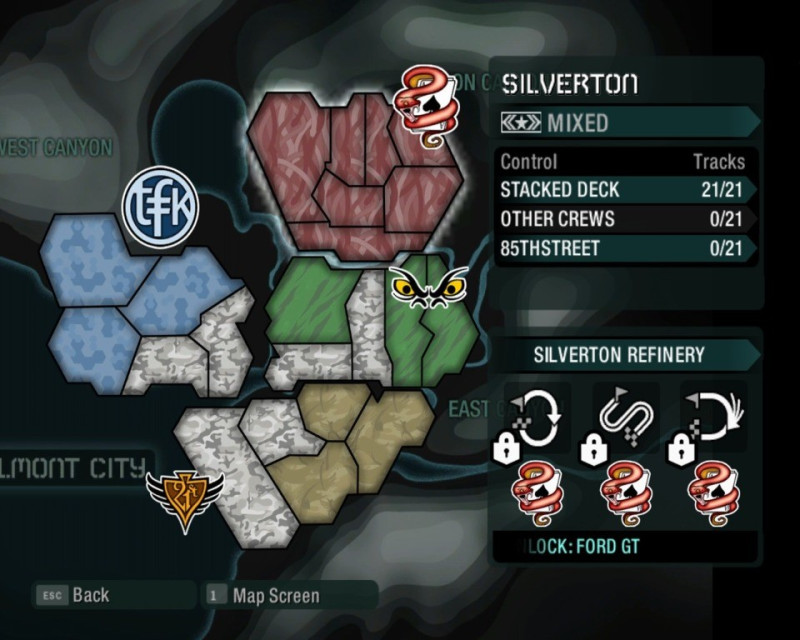
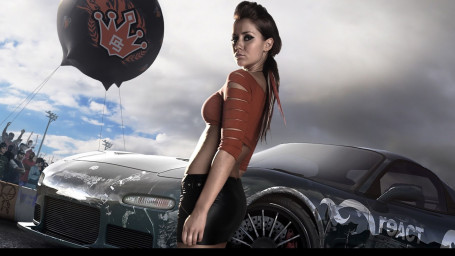

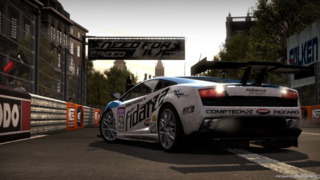
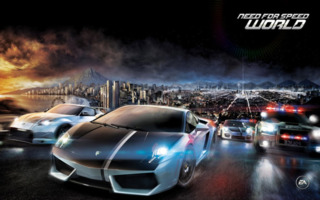

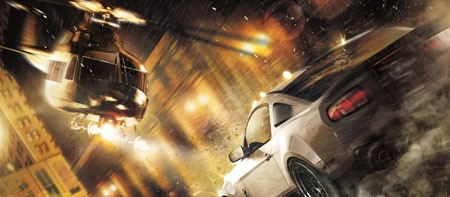
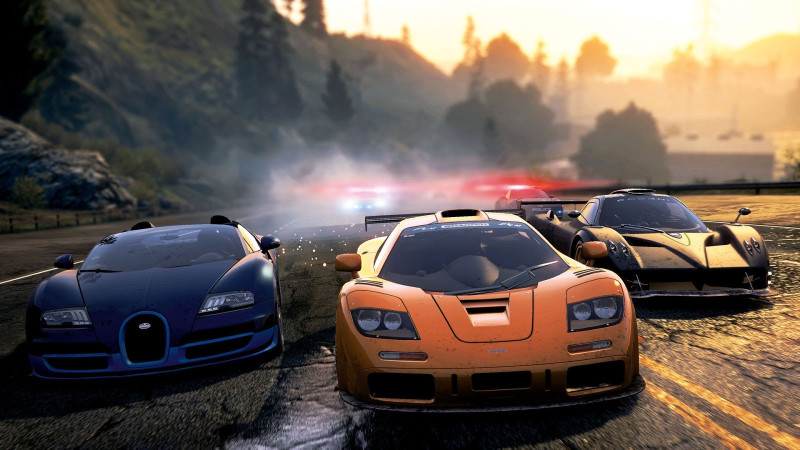
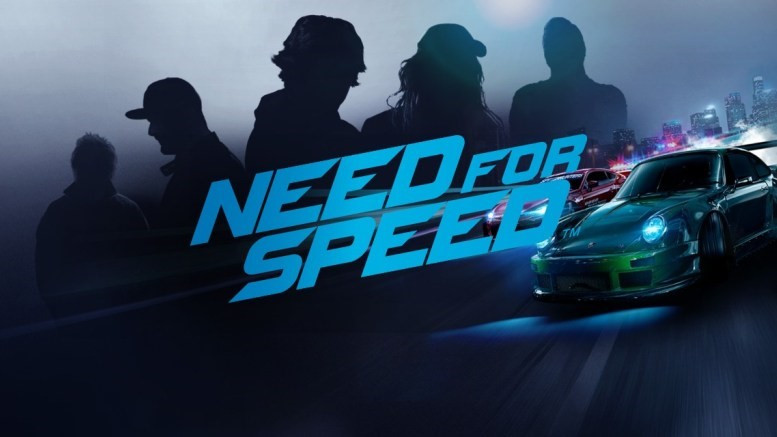

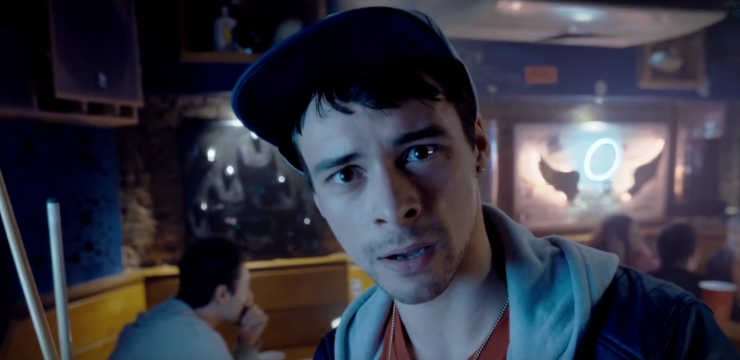


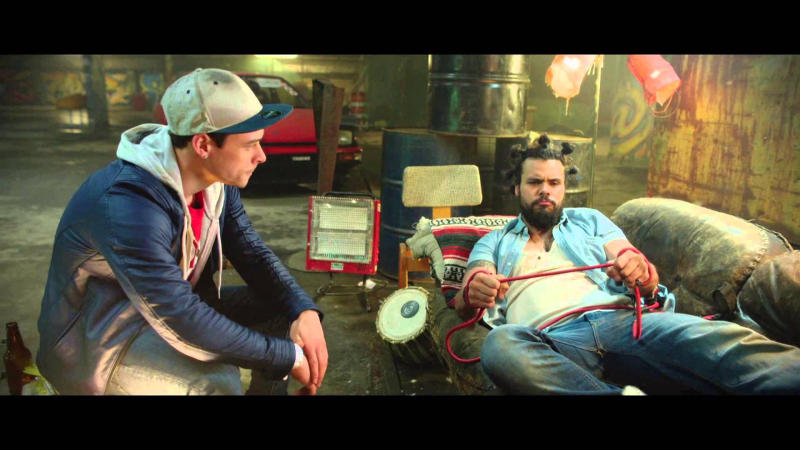

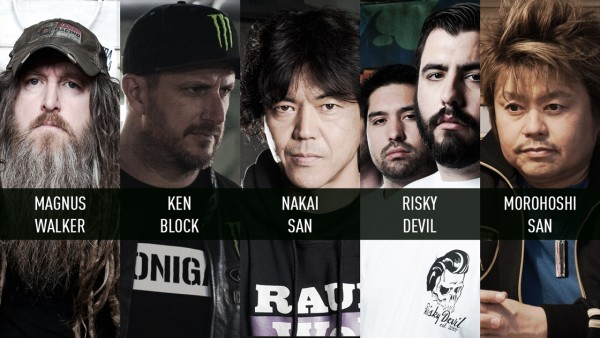
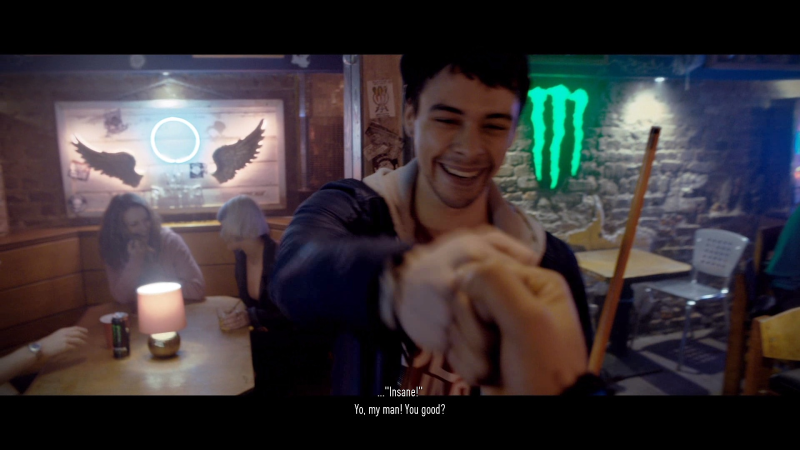
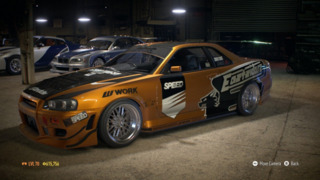
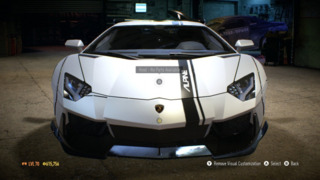
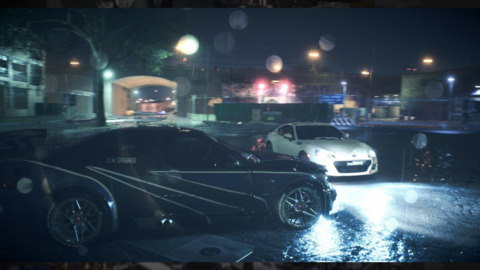
Log in to comment